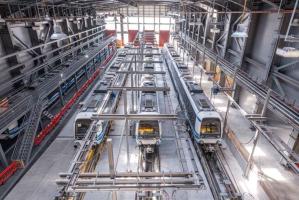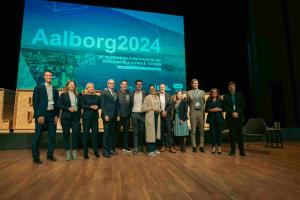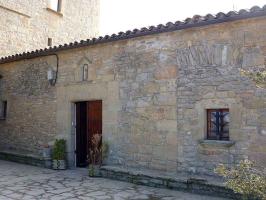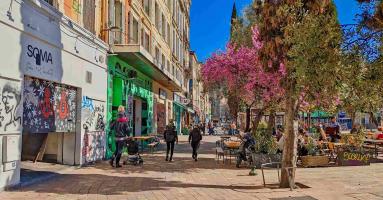Thessaloniki gets ready for its metro launch in November
The underground rapid transit lines have been under construction for almost two decades due to various project delays
 TheMayor.EU logo
TheMayor.EU logo Have you heard that there is no Santa Claus in Czechia?
Most of the films we watch and the books we read have a very specific portrayal of the holiday season. Christmas is always associated with Santa Claus, families always open presents on the morning of 25 December, and they always have turkey for dinner. While this portrayal is certainly not false, it fails to consider or represent the traditions of other cultures.
People all over the world celebrate Christmas in their own unique ways. However, we frequently perceive their customs as strange simply because we are never exposed to them. For this reason, TheMayor.EU has chosen to share and explore 3 European Christmas traditions that few have heard of in order to shed a light on some of the lesser-known holiday customs.
Czechs celebrate Christmas but do not have Santa Claus. Considering the conventional portrayal of the festive season, this sentence can sound almost like a contradiction since Santa has almost become synonymous with Christmas. In turn, it leaves people questioning: If not Santa Claus, then who?
Instead of waiting for Santa Claus and his reindeer, children in Czechia await Jezisek – Baby Jesus. Taking this further, unlike Santa Claus, Jezisek does not sneak into the house while everyone is sleeping but rather while children are eating on Christmas Eve. Then, he delivers their gifts and rings a bell to announce their arrival.
It is important to note that although Czechs do not believe in Santa Claus, they do believe in St Nicholas. That is, during the first week of December, St Nicholas visits children to judge whether they have been naughty or nice and to give out small presents.
While most children fear that they will receive coal if they misbehave, the little ones in the Bavarian and Austrian Alps are afraid of something much more frightening: Krampus, a half-goat, half-devil who takes on the role of Santa’s sidekick.
As in Czechia, St Nicholas visits children on the night of 5 December in the Alps. However, he does so alongside Krampus, who threatens to kidnap those who have been naughty during the year. This evening is therefore known as Krampusnacht (Krampus Night).
On this evening too, men in southern Bavaria sometimes dress up as the mythical creature and wander through the streets, waiting to be invited in by the parents of children who misbehave.
The origins of Krampus are unclear, with many believing that the legend dates back to before Christianity.
Known as the Spanish version of April Fool’s, Dia de Los Santos Inocentes (Holy Innocents’ Day) takes place on 28 December. To mark this day, people in Spain pull pranks, dress up in funny costumes, and trick their loved ones.
Although the day has religious significance and originates from an event from the Bible, it has evolved through time. Thus, while people would once pray, they now pull simple pranks like switching the salt and sugar. These little jokes are known as inocentadas and are an integral part of the holiday season.
Of course, these pranks can also be more elaborate, with the media often making up fake reports and ridiculous stories. What is more, some cities hold carnivals, fundraisers, and parades to mark the day.
To sum up, there are countless Christmas traditions not only in Europe but all over the world. More importantly, they are all equally special.

The underground rapid transit lines have been under construction for almost two decades due to various project delays

Now you can get your wine in Talence by paying directly in Bitcoin

That’s because the state has to spend money on updating the railway infrastructure rather than subsidizing the cost of the popular pass

Rethinking renewable energy sources for the urban landscape

The examples, compiled by Beyond Fossil Fuels, can inform and inspire communities and entrepreneurs that still feel trepidation at the prospect of energy transition

Now you can get your wine in Talence by paying directly in Bitcoin

The 10th European Conference on Sustainable Cities and Towns (ESCT) sets the stage for stronger cooperation between the EU, national and local level to fast track Europe's transition to climate neutrality.

At least, that’s the promise made by the mayor of Paris, Anne Hidalgo

The underground rapid transit lines have been under construction for almost two decades due to various project delays

At least, that’s the promise made by the mayor of Paris, Anne Hidalgo

Hostal de Pinós is located in the geographical centre of the autonomous region

Despite its church-y name, the district has long been known as the hangout spot for the artsy crowds

Urban dwellers across the EU are having a say in making their surroundings friendlier to people and the environment.

Forests in the EU can help green the European construction industry and bolster a continent-wide push for architectural improvements.

Apply by 10 November and do your part for the transformation of European public spaces

An interview with the Mayor of a Polish city that seeks to reinvent itself

An interview with the newly elected ICLEI President and Mayor of Malmö

A conversation with the Mayor of Lisbon about the spirit and dimensions of innovation present in the Portuguese capital














